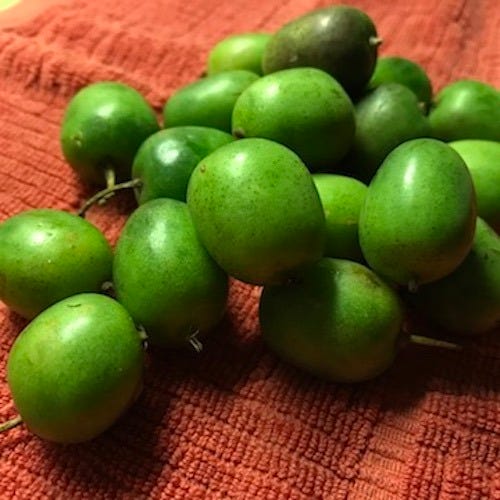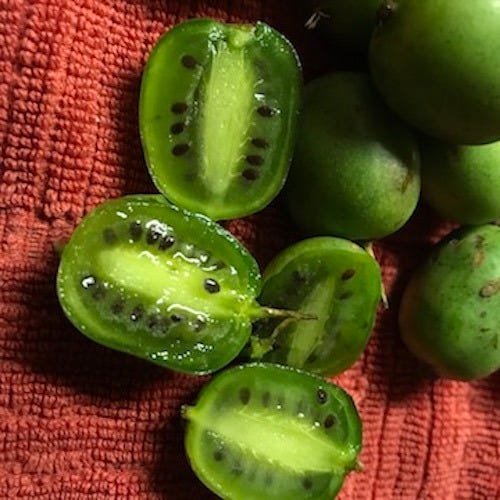Writer Jim Minick was a featured speaker at the 2018 On The Same Page Literary Festival in Ashe County, NC. He came with a new book to share and a gift of food for all his writer friends. That’s how Jim–who generally eats a plant-based diet–rolls.
When I first met him, Jim and his wife Sarah had sold their pick-your-own blueberry farm in Floyd County, Virginia, which became the subject of his award-winning book, The Blueberry Years: A Memoir of Farm and Family (St. Martin’s/Dunne, 2010). Jim and Sarah next took up residence on a farm near Rural Retreat in Wythe County, Virginia, where he planted 50 new blueberry bushes and harvests apples and other edibles. Though he commutes monthly to Augusta, Georgia, to teach creative writing, Jim has managed to find the time to write an engaging novel about Pennsylvania Dutch farmers and folk healers entitled Fire Is Your Water. It was named best fiction book of the year for 2017 by the Appalachian Writers Association.
Writer and grower Jim Minick. Photo by Chris Arvidson, chrisarvidson.com
As you might surmise, Jim loves the land, homegrown food, and writing about nature. When he pulled several plastic containers out of a wilted brown paper bag after his talk at the Ashe County Library, I thought he had brought his writer friends some green olives. He lifted the lid on one container, and even as I picked up a sample and popped it in my mouth, I still thought it might be an olive with a fragment of the stem intact.
“They’re miniature kiwis,” Jim said, showing his wide, toothy grin that always crinkles the skin on either side of his eyes.
“You grew them?” I asked, still savoring the surprise in my mouth.
“I did.” He said with his usual modesty. “They grow on a vine. They’re almost INVASIVE!”
Miniature kiwis Photos by Donna Campbell
I bit a second little kiwi in half. It was like a sweet green kiss on the lips. The smooth, thin skin gave in easily. The crunchy kiwi seeds ran the full length of the oblong fruit. The taste was refreshing–a juicy sweetness that reminded me of my grandfather’s Green Gage plums. These kiwis don’t have that pesky sourness or acidity of their larger, fuzzy cousins. Fabulous. I immediately wondered if they’d go well in cocktails–in much the same way we had recently served figs in bubbly Prosecco at my book launch.
Further research reveals that this variety of kiwi–and there are many–is Actinidia arguta, also known as the cocktail or hardy kiwi. It grows in climates as harsh as Siberia’s and can survive temperatures dropping to minus 25 degrees Fahrenheit.
According to the British horticulturalist and foodie James Wong, who grows them in his Croyden garden, the plants will take two to three years to produce fruit, yet by year five, one plant may produce up to 400 fruits. New growth, however, must be pruned back with some vigilance to guarantee maximum sun exposure and to keep the plants bush-like and productive.
Jim set out a pair of kiwi plants—it takes a male and a female to produce fruit– and four grape plants, all to grow on a stout nine foot tall trellis–high enough to walk under and twelve feet in length. The grapes made a mess, Jim said, and did not prosper without spraying, which he eschews, so he eventually cut them down. The kiwi soon took over the entire trellis, then a nearby sapling, and now Jim has to prop the vines up with two by sixes to keep them accessible for picking and from spreading too far out the sides.
“Like a persimmon, the immature fruit will turn your mouth inside out, but it’s best to pick them a little immature and pop them in the fridge,” Jim says. He’s had these kiwis last until Thanksgiving. “You pull them out when you want them, and let them sit a day to ripen up.” The Minicks simply eat them and give them away to friends. They’ve never tried to make pies or cocktails or even smoothies with them.
For information on nutrition, I turned to the website of the George Mateljan Foundation, a nonprofit philanthropic organization that was a valuable resource in my chapter on cantaloupe in The Month of Their Ripening. Mateljan affirms that the more familiar fuzzy kiwi variety–Actinidia deliciosa–is packed with vitamin C and anti-oxidants. It’s a good source of fiber and potassium and is helpful in the control of blood sugar, the prevention of macular degeneration, and the maintenance of both cardiovascular and colon health. A study conducted in Italy found that kiwi consumed with some regularity can also help children with asthma breathe better. Presumably the smaller kiwis have similar benefits. Kiwi fruit grown without the use of pesticides or exposure to heavy metals and certified as organic are best, of course.
Originally called Chinese Gooseberries and first introduced in an American restaurant in 1961, these fruits underwent a name change when an enthusiastic produce distributor claimed to have “discovered” them and began importing them in quantity to the U.S. a year later. The Kiwi, a bird native to New Zealand, became their new namesake, and now, according to the Matjelan Foundation, “Italy, New Zealand, Chile France, Japan and the U.S. are among the leading commercial producers of kiwifruit.”
Cocktail or hardy kiwis are available for fall planting right now from Spring Hill Nurseries in Ohio and come in pairs. The female bears the fruit while the male plant produces variegated leaves, says the website. The Burpee Seed catalog also sells three varieties in four-inch pots, including an extra hardy plant developed at Michigan State that grows as far north as Zone 5. Some fruits turn red; others stay green.
Given the nutritional benefits, I wish I could convince my mountain neighbors to give these expansive kiwis a try in their sunny lower pasture, and I’d help them with the pruning, since the full sun spots in my yard are now quite limited. I asked Jim Minick if he’d plant them again if he had a do-ever. “I would,” he said, “but I’d build an even bigger trellis that was only four feet tall to make the harvesting easier.”







